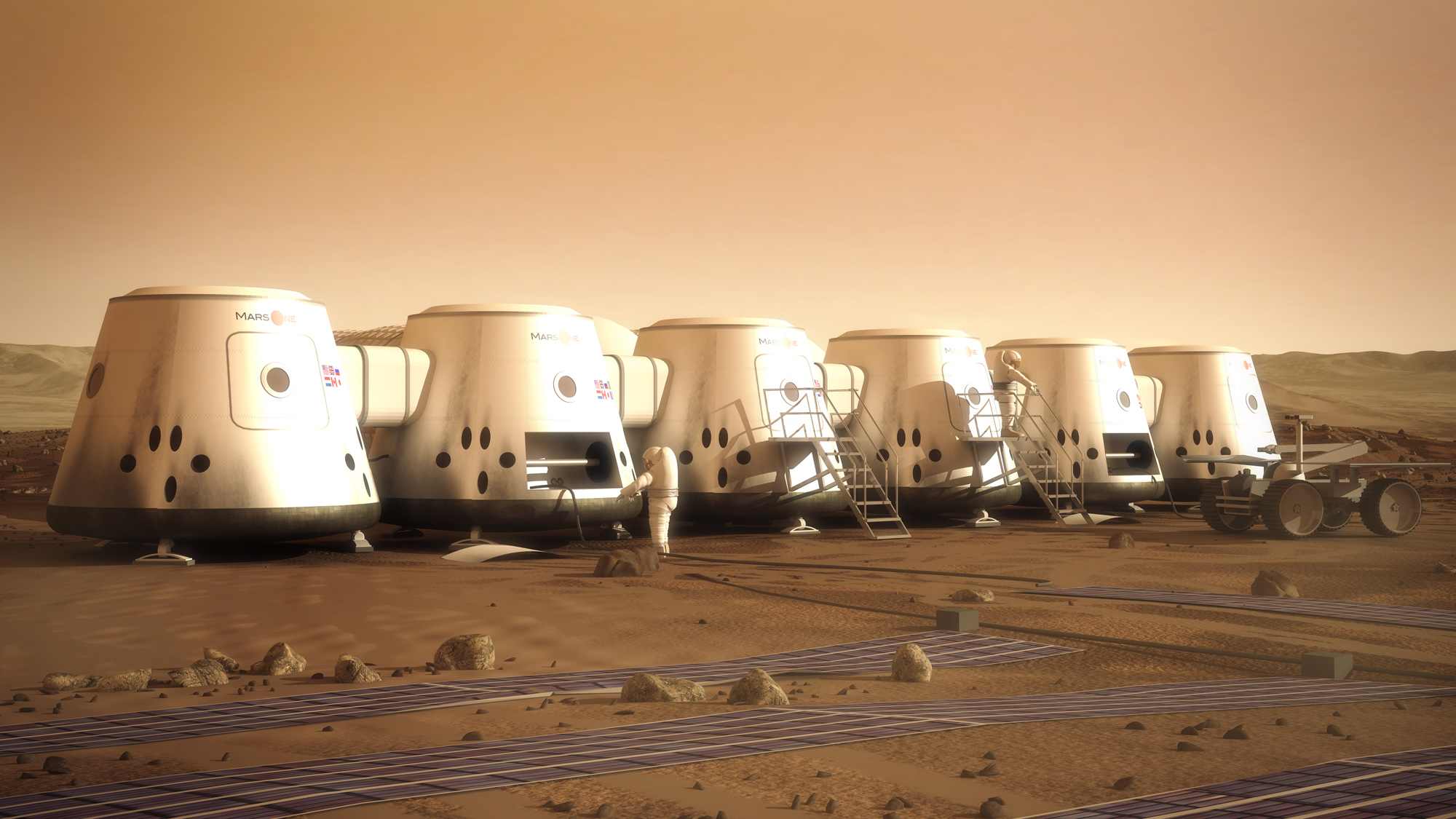Want to Live on Mars? Private Martian Colony Project Seeks Astronauts

NEW YORK — If a one-way trip to Mars appeals to you, now's the time to apply to be part of the first crew of a Red Planet colony.
The Netherlands-based nonprofit Mars One is planning to fly teams of four astronauts to the Red Planet, with the first landing slated to occur in 2023, exactly 10 years from today (April 22), to establish a human settlement on our planetary neighbor. Today, the organization opened up its astronaut selection process, which it hopes will raise some of the funding for the project.
Those over age 18 interested in spending the rest of their lives in space can apply by submitting applications and short videos to the Mars One site. There is no maximum age for applicants, nor a required technical background or even nationality or language — astronaut candidates will have a few years to learn English if they don't speak it already. [Mars One's Red Planet Colony Project (Gallery)]
Successful applicants will have intelligence, resourcefulness, courage, determination and skill, as well as psychological stability, said Mars One ambassador Gerard 't Hooft, a Nobel Prize-winning theoretical physicist.
"Selecting these people will be a very difficult task," 't Hooft said during a press conference here to announce the selection process. "There shall be no exclusion on the basis of race, nationality, religion and gender."
There will be a minor fee associated with submitting an application, which will range from $5 to $75 depending on the gross national income of the applicant's home country, officials said. The application fee for United States citizens is $38.
Mars One estimates it will need about $6 billion to send the first four inhabitants to start the Red Planet colony, with $4 billion needed to launch each subsequent crew. In addition to the application fees, the organization hopes to raise money via a reality television show that will follow its astronaut selection and training process.
Breaking space news, the latest updates on rocket launches, skywatching events and more!
Though a one-way ticket to Mars isn't everyone's idea of a dream getaway, the project's leaders anticipate a high level of enthusiasm for the mission; they've received about 10,000 emails already from people interested in applying. Mars One hopes to recruit astronauts from around the world to create a colony populated by a diverse representation of Earth's inhabitants.
"We want this to be a mission of humanity," Mars One co-founder and chief executive officer Bas Lansdorp told SPACE.com.
Mars One plans to put its astronaut finalists through seven years of training and testing exercises that will expose them to potential situations they might face during the mission. The astronaut trainees will also have to spend some time living in mock Mars colonies on Earth and communicating with Mission Control via a 6 to 20-minute time delay to simulate the lag between a signal being sent and its arrival on Mars.
By July 2015, Mars One plans to have selected its top 24 astronauts, grouped into crews of six.
So far, no spacecraft or rocket has been chosen for the journey, though organization officials say they are considering modifying the Dragon capsule being developed by the private aerospace firm SpaceX (Space Exploration Technologies Corp.). The Mars lander, rovers and habitat modules required will likely have to be designed and built from the ground up, but will be based on existing technology.
"This will not be easy," Lansdorp said. "There is a lot of engineering and testing to be done before the first humans will land. But no new inventions are needed to land humans on Mars. There might be delays, there might be cost overruns, there might even be failures, but it can be done."
The endeavor will begin with an initial test launch to Mars in 2016 to demonstrate the landing technology, with a second mission in 2018 to deliver a robotic rover to scout out landing sites. In 2020 a second rover will launch to Mars to begin assembling some of the first settlers' equipment and habitats, which will be ready and waiting when they land. The trip to Mars will take about seven months.
Mars One has hired the research firm Paragon Space Development Corporation to design the life support technologies needed for the mission.
"There's no doubt that the success of this mission depends on the life support system on the surface of Mars working forever," said Grant Anderson, Paragon chief engineer and co-founder. "To be successful, we have to execute a major and logical problem of applied engineering. We have to do the design, build and then test extensively before we leave."
To learn more about Mars One or apply, visit: https://apply.mars-one.com/
Follow Clara Moskowitz on Twitter and Google+. Follow us @Spacedotcom, Facebook and Google+. Original article on SPACE.com.

Clara Moskowitz is a science and space writer who joined the Space.com team in 2008 and served as Assistant Managing Editor from 2011 to 2013. Clara has a bachelor's degree in astronomy and physics from Wesleyan University, and a graduate certificate in science writing from the University of California, Santa Cruz. She covers everything from astronomy to human spaceflight and once aced a NASTAR suborbital spaceflight training program for space missions. Clara is currently Associate Editor of Scientific American. To see her latest project is, follow Clara on Twitter.


